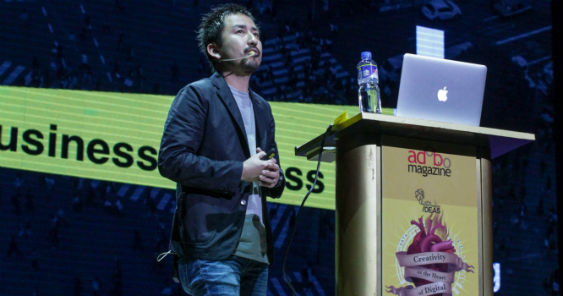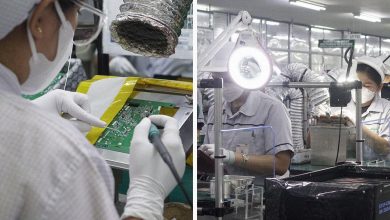Dentsu Tokyo’s Open Road Project made Toyota’s i-ROAD an efficient alternative to the usual car
By Nicai de Guzman
For Kazuhiro Shimura, Creative Director of Dentsu Tokyo, working in a creative agency made him realize that creativity is expanding.
“We’ve seen a lot of changes but I think this is the biggest change,” he said.
When you look at the whole process of client business, the creative part comes almost like an afterthought but if you include it in the start of the process, the possibilities become great, according to Shimura.
He calls this “Seed Creativity” and this is what he discussed during the 4th adobo Festival of Ideas: “Creativity at the Heart of Digital: Data, Tech, AI.”
The Open Road Project
Shimura discussed the Open Road Project, an execution for Toyota’s i-ROAD, a three-wheeled, compact, and eco-friendly car. To gather data on how they can better the drivers’ experiences, they studied how the test drivers used the i-ROAD. What they found out was that the drivers had a unique and fun driving experience. However, parking was very expensive in Tokyo. They had to pay the same price for parking even though they only use half the space.
“Will future customers be happy with this? The real issue was not the product itself. It was not about the car. We then discussed why i-ROAD was created in the first place.”
By going back to the product’s vision, they discovered the true value from the customer themselves. They are people who experience heavy traffic congestion and very narrow streets. With i-ROAD, they now have more freedom to drive in big cities like Tokyo, according to Shimura.
“For this Open Road Project, instead of campaigns, we proposed to design services,” he said.
One service is Sound X, a feature in i-ROAD that creates real time sounds based on driving data. It got driving data from the accelerator, steering, leaning and speed was transformed into sound. You can change the sound according to time, place, and situation. You can even download your favorite sound. The experience is similar like driving in a video game, Shimura said.
Another service they created was the Road Kitchen, which lets you create customized car accessories and parts using a 3D printer. From an exclusive website, you can choose the designs and color. You can also have a designer help you out. The design will then be shaped in a 3D printer to be put on your i-ROAD.
Despite these features, Shimura and his team were not convinced.
“These features were nice to have however they were not successful because they didn’t contribute to the main goal of i-ROAD which is to bring freedom to urban driving,” he said.
“We had to go back to our vision, from the start, in the beginning of the open road project,” Shimura added.
The Small Space Parking and the Smile Lock Outlet
They went back to the drawing board and reminded themselves of the initial problem set out by their users – that parking was expensive in Tokyo. In fact, parking spaces charge as much as USD5 for every ten minutes! This would be unfair to i-ROAD drivers since the car only takes up less than half the space of a normal car.
“Our idea is to create a new parking space called Small Space Parking. We connected small spaces in Tokyo that could be used in parking the i-ROAD and create a network of parking spaces,” Shimura said.
This includes spaces between buildings, under the stairs, or in unused spots in stores. Using their test drivers who have discovered various small parking spaces, the data was collected, stored in the cloud, and distributed to other drivers who may use the information. These were all accessible via a service platform.
After they launched the small space parking initiative, the driving distance of their users increased by ten times – from 58 kmh to 596 kmh. However since the i-ROAD owners were driving more, they faced a new problem – the batteries in i-ROADS were running out fast.
“We saw this situation as an opportunity for innovation so we came up with Smile Lock Outlet, the second example of Seed Creativity,” Shimura said.
Smile Lock Outlet lets users share electricity around town. What they did was they developed an outlet connected to the internet of things (IoT) that also gathers data such as where the user is charging and how much. Users can control and see their data via the app. The Smile Lock Outlet has basic sensors and a SIM card so production is not expensive, according to Shimura.
“The point is you do not have to use cutting-edge technology for everything,” he said.
With all these innovation and technology, at the heart of it is creativity – the creativity to discover, the creativity to invent, and the creativity to deliver. And it was all possible by simply going back to the vision of the product, Shimura said.
“It not easy to predict future problems but if you stay focused on your vision, it will help you overcome problems.”
Watch the full session here:










